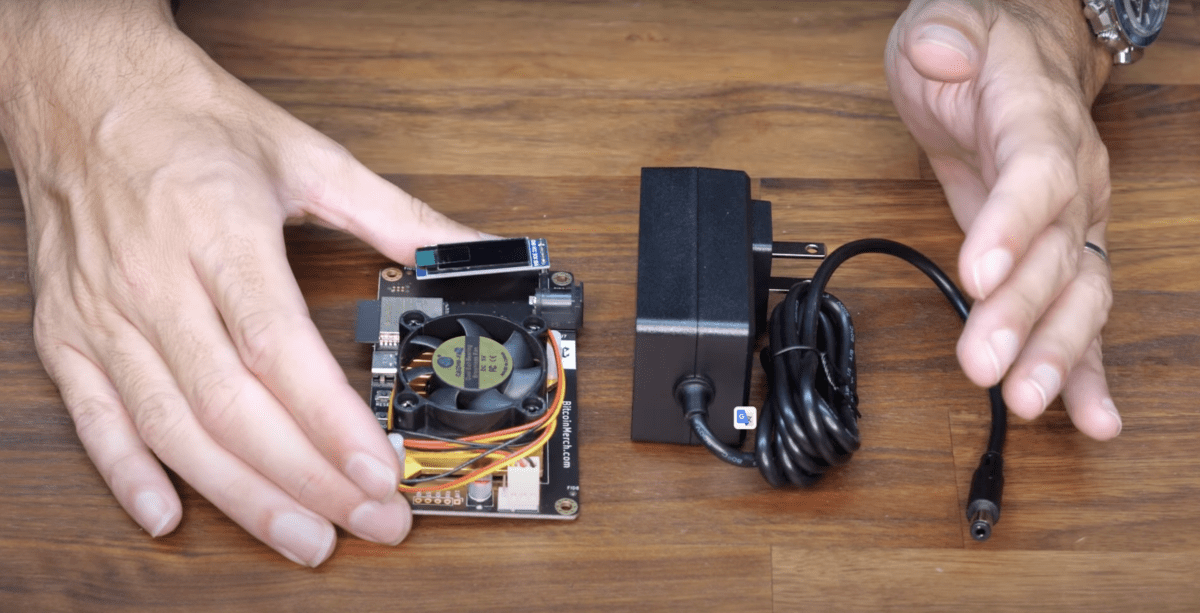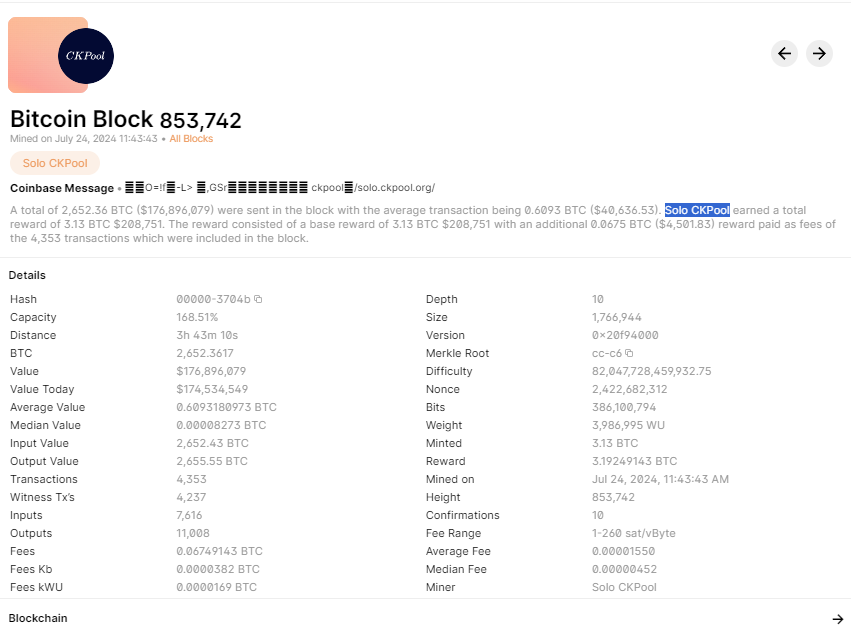According to a tweet from Bitcoin mining machine retailer Altair Technology, a Bitcoin mining machine with a computing power of only 500Gh/s successfully mined a block on July 24. Based on current Bitcoin prices, the block is worth approximately $206,000.
Produced by D-Central Technologies, this mining machine is only about the size of a palm and is a fairly small mining machine.

According to reports , the miner was connected to the node infrastructure service Solo CKPool when it successfully mined the block. CKPool's Solo CKPool is a specific service that supports independent mining, allowing miners to operate independently without sharing resources with other miners. If a miner successfully mines a block, they receive the entire reward for that block and do not need to share it with other miners. Although it is called a "mining pool", it actually allows miners to mine as independent nodes, rather than a cooperative mining pool in the traditional sense.
Blockchain data shows that the Bitcoin block number is 853742, which was mined at 11:43 am UTC on July 24 and generated by "Solo CKPool". According to Altair, this block was independently mined by 500 Gh/s Bitaxe equipment.

According to data from Bitcoin analysis platform CoinWarz, the current total computing power of the Bitcoin network is 552.49 Eh/s, equivalent to 552,490,000,000 Gh/s, which is approximately 1.1 billion times the power of Bitaxe mining machines. In other words, the probability of Bitaxe independently mining a block is only 1 in 1.1 billion. An independent Bitcoin miner also mined a block in April this year. However, the device used by that miner has a power of 120,000,000 Gh/s, which is 240 times the processing power of Bitaxe.
Generally speaking, most Bitcoin miners will choose to pool their computing power with other peers and distribute the rewards in the pool equally based on the proportion of computing power each miner contributes. However, some Bitcoin enthusiasts worry that this approach will lead to the centralization of the Bitcoin network, so they insist on independent mining.







